Styles and directions of contemporary music. Styles and directions of painting
Gothic(from Italian gotico - unusual, barbaric) - a period in the development of medieval art, covering almost all areas of culture and developing in Western, Central and partly Eastern Europe from the 12th to the 15th century. Gothic completed the development of European medieval art, having arisen on the basis of the achievements of the Romanesque culture, and during the Renaissance, the art of the Middle Ages was considered "barbaric". Gothic art was cult in purpose and religious in subject matter. It appealed to the highest divine powers, eternity, the Christian worldview. Gothic in its development is divided into Early Gothic, Heyday, Late Gothic.
The famous European cathedrals, which are so fond of photographing in the smallest details tourists. In the design of the interiors of Gothic cathedrals, an important role was assigned to color schemes. An abundance of gilding reigned in the exterior and interior decoration, the luminosity of the interior, the openwork of the walls, and the crystalline dissection of space. Matter was devoid of heaviness and impenetrability, it was, as it were, spiritualized.
The huge surfaces of the windows were filled with stained-glass windows with compositions reproducing historical events, apocryphal legends, literary and religious plots, images of everyday scenes from the life of ordinary peasants and artisans, which were a unique encyclopedia of the way of life in the Middle Ages. Kona were filled from top to bottom with figured compositions, which were enclosed in medallions. The combination of light and color beginnings of painting in the stained glass technique gave increased emotionality to artistic compositions. A variety of glasses were used: thick scarlet, fiery, red, pomegranate, green, yellow, dark blue, light blue, ultramarine, cut along the contour of the pattern ... The windows warmed like precious gems, penetrated by outside light - they transformed the entire interior of the temple and tuned his visitors to a sublime mood.
Thanks to the Gothic color glass, new aesthetic values were born, and the colors acquired the highest sonority of radiant color. Pure color gave rise to the atmosphere of the air environment, painted in different colors due to the play of light on the columns, floor, stained-glass windows. The color became a source of light that deepened the perspective. Thick glasses, often uneven, were filled with not quite transparent bubbles, which enhanced the artistic effect of the stained glass. The light, passing through the uneven thickness of the glass, was crushed and began to play.
The best examples of genuine Gothic stained-glass windows are open to the public in the cathedrals of Chartres, Bourges and Paris (for example, "The Virgin and Child"). Filled with no less splendor, as well as "Fiery wheels" and "Throwing lightning" in Chartres Cathedral.
From the middle of the 1st century, complex colors began to be introduced into the colorful range, obtained by duplicating glass. Such extraordinary stained-glass windows in the Gothic style are preserved in the Sainte-Chapelle (1250). brown enamel paint was applied to the contours of the glass, while the forms had a planar character.
The Gothic era was the heyday of the art of the miniature book, as well as artistic miniatures. The strengthening of secular tendencies in culture only intensified their development. Illustrations with multi-figure compositions on religious themes included various realistic details: images of birds, animals, butterflies, ornaments of plant motifs, everyday scenes. The works of the French miniaturist Jean Pussel are filled with a special poetic charm.
In the development of the French Gothic miniature of the 13th and 14th centuries, the leading place was occupied by the Parisian school. The Psalter of St. Louis is replete with multi-figure compositions framed by one motif gothic architecture, which is why the narrative acquires extraordinary harmony (Louvre, Paris, 1270). the figures of ladies and knights are graceful, their forms are distinguished by flowing lines, which creates the illusion of movement. The richness and density of colors, as well as the decorative architecture of the drawing, turn these miniatures into unique works of art and precious page decorations.
The style of the Gothic book is distinguished by pointed forms, angular rhythm, restlessness, filigree openwork pattern and slouchness of sinuous lines. It is worth noting that in the 14th and 15th century, secular manuscripts were also illustrated. Books of hours, scientific treatises, collections of love songs and chronicles are filled with magnificent miniatures. The miniature, illustrating works of courtly literature, embodied the ideal of chivalrous love, as well as scenes from ordinary surrounding life. A similar creation is the Manes manuscript (1320).
Over time, the narrative intensified in Gothic. The “Great French Chronicles” of the 14th century clearly demonstrate the artist’s desire to penetrate the meaning of the event he depicts. Along with this, the books were given decorative elegance through the use of exquisite vignettes and frames of bizarre shapes.
The Gothic miniature had a great influence on painting and brought a lively stream to the art of the Middle Ages. Gothic has become not just a style, but an important link in the overall cultural development of society. Masters of style with incredible accuracy were able to reproduce the image of their contemporary in the subject and natural environment. Majestic and spiritual Gothic works are surrounded by an aura of unique aesthetic charm. Gothic gave birth to a new understanding of the synthesis of the arts, and its realistic conquests paved the way for the transition to the art of the Renaissance.
Styles and directions of paintingThe number of styles and trends is huge, if not endless. Styles in art do not have clear boundaries, they smoothly pass one into another and are in continuous development, mixing and opposition. Within the framework of one historical artistic style, a new one is always born, and that, in turn, passes into the next. Many styles coexist at the same time and therefore there are no “pure styles” at all.
Abstractionism (from Latin abstractio - removal, distraction) - an artistic direction in art that has abandoned the image of forms close to reality.

avant-garde, avant-garde (from French avant-garde - forward detachment) - common name artistic trends in the art of the 20th century, which are characterized by the search for new forms and means of artistic display, underestimation or complete denial of traditions and absolutization of innovation.

Academicism (from French academisme) - a direction in European painting of the 16th-19th centuries. It was based on dogmatic adherence to the external forms of classical art. Followers characterized this style as a reflection on the art form of the ancient ancient world and the Renaissance. Academism replenished the traditions of ancient art, in which the image of nature was idealized, while compensating for the norm of beauty. Annibale, Agostino and Lodovico Carracci wrote in this style.

Actionism (from English action art - the art of action) - happening, performance, event, process art, demonstration art and a number of other forms that arose in the avant-garde art of the 1960s. In accordance with the ideology of actionism, the artist must organize events and processes. Actionism seeks to blur the line between art and reality.

Empire (from the French empire - empire) - a style in architecture and decorative art that arose in France at the beginning of the 19th century, during the First Empire of Napoleon Bonaparte. Empire - the final development of classicism. For the embodiment of majesty, sophistication, luxury, power and military strength, the Empire is characterized by an appeal to ancient art: ancient Egyptian decorative forms (war trophies, winged sphinxes ...), Etruscan vases, Pompeian paintings, Greek and Roman decor, Renaissance frescoes and ornaments. The main representative of this style was J. L. David (paintings "The Oath of the Horatii" (1784), "Brutus" (1789))

underground (from English underground - underground, dungeon) - a number of artistic trends in contemporary art who oppose themselves to mass culture, the mainstream. The underground rejects and violates the political, moral and ethical orientations and types of behavior accepted in society, introducing antisocial behavior into everyday life. In the Soviet period, due to the severity of the regime, almost any unofficial, i.e. not recognized by the authorities, art turned out to be underground.
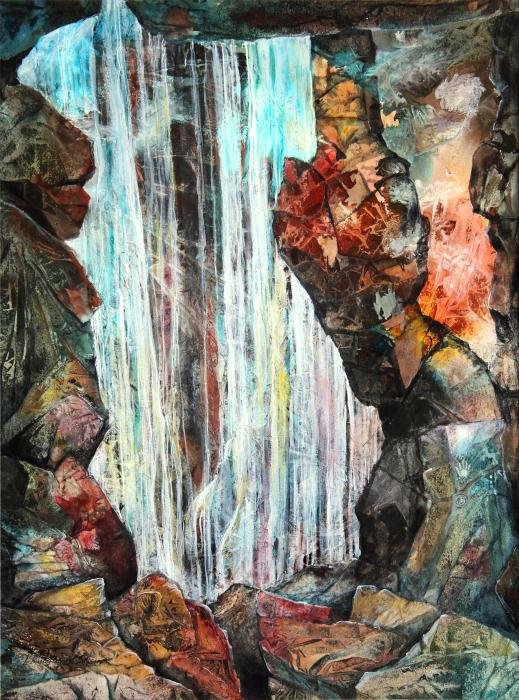
Art Nouveau (from French art nouveau, literally - new art) - the name of the Art Nouveau style common in many countries (Belgium, France, England, USA, etc.). The most famous artist of this direction of painting: Alphonse Mucha.
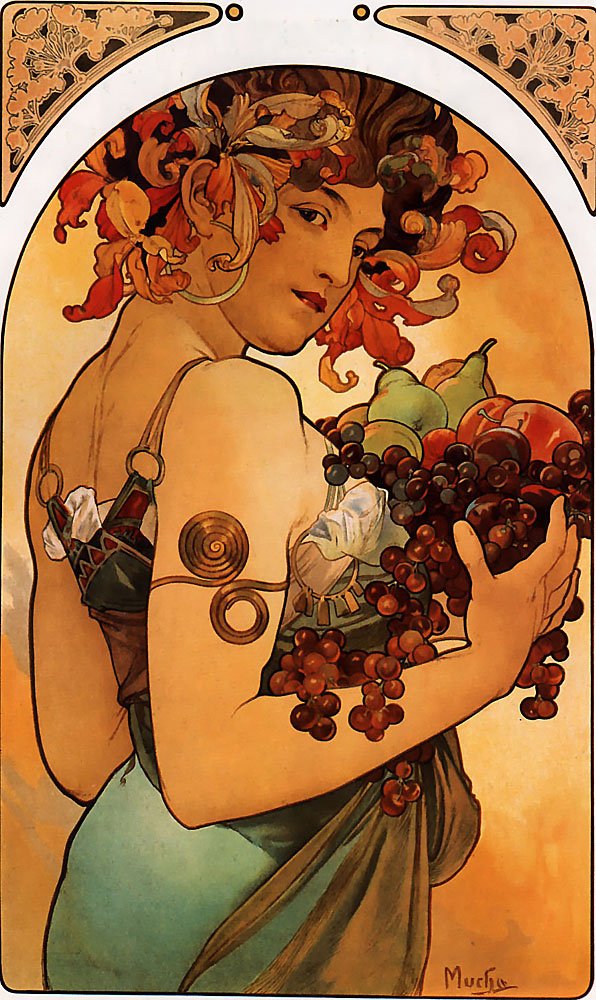
Art Deco (from French art deco, abbreviated from decoratif) - a trend in art in the middle of the 20th century, which marked the synthesis of avant-garde and neoclassicism, replaced constructivism. Distinctive features of this direction: fatigue, geometric lines, luxury, chic, expensive materials (ivory, crocodile skin). The most famous artist of this trend is Tamara de Lempicka (1898-1980).
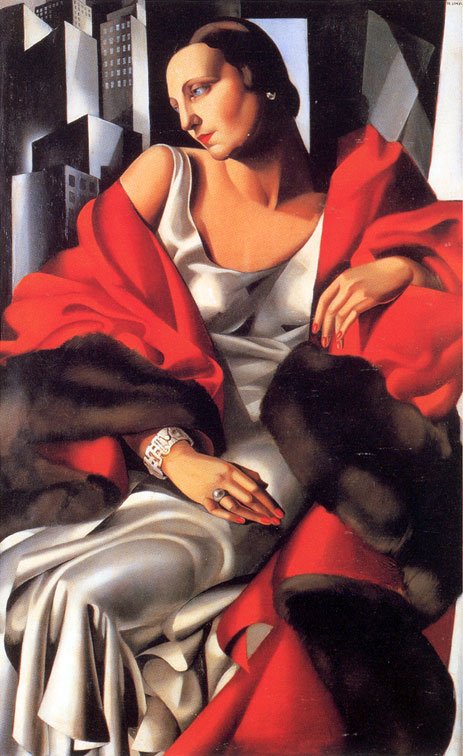
Baroque (from Italian barocco - strange, bizarre or from port. perola barroca - an irregularly shaped pearl, there are other assumptions about the origin of this word) - art style in art late Renaissance. Distinctive features of this style: exaggeration of size, broken lines, an abundance of decorative details, heaviness and colossality.



Revival, or Renaissance (from French renaissance, Italian rinascimento) is an era in the history of European culture that replaced the culture of the Middle Ages and preceded the culture of modern times. Approximate chronological framework of the era - XIV-XVI centuries. Distinctive feature renaissance - the secular nature of culture and its anthropocentrism (that is, interest, first of all, in a person and his activities). There is an interest in ancient culture, there is, as it were, its “revival” - and this is how the term appeared. Drawing pictures of traditional religious themes, the artists began to use new artistic techniques: building a three-dimensional composition, using a landscape in the background, which allowed them to make the images more realistic and lively. This sharply distinguished their work from the previous iconographic tradition, replete with conventions in the image. Most famous artists of this period: Sandro Botticelli (1447-1515), Leonardo da Vinci (1452-1519), Raphael Santi (1483-1520), Michelangelo Buonarroti (1475-1564), Titian (1477-1576), Antonio Correggio (1489-1534) , Hieronymus Bosch (1450-1516), Albrecht Durer (1471-1528).



Woodland (from English - forest land) - a style in art, originating in the symbolism of rock art, myths and legends of North American Indians.

Gothic (from Italian gotico - unusual, barbaric) - a period in the development of medieval art, covering almost all areas of culture and developing in Western, Central and partly Eastern Europe from the 12th to the 15th century. Gothic completed the development of European medieval art, having arisen on the basis of the achievements of the Romanesque culture, and during the Renaissance, the art of the Middle Ages was considered "barbaric". Gothic art was cult in purpose and religious in subject matter. It appealed to the highest divine powers, eternity, the Christian worldview. Gothic in its development is divided into Early Gothic, Heyday, Late Gothic.


Impressionism (from French impression - impression) is a trend in European painting that originated in France in the middle of the 19th century, the main purpose of which was to convey fleeting, changeable impressions.

Kitsch, kitsch (from German kitsch - bad taste) - a term denoting one of the most odious phenomena mass culture, a synonym for pseudo-art, in which the main attention is paid to the extravagance of the external appearance, the loudness of its elements. In fact, kitsch is a kind of postmodernism. Kitsch is mass art for the elite. A work belonging to kitsch must be made at a high artistic level, it must have a fascinating plot, but this is not a real work of art in a high sense, but a skillful fake for it. There may be deep psychological conflicts in kitsch, but there are no genuine artistic discoveries and revelations.
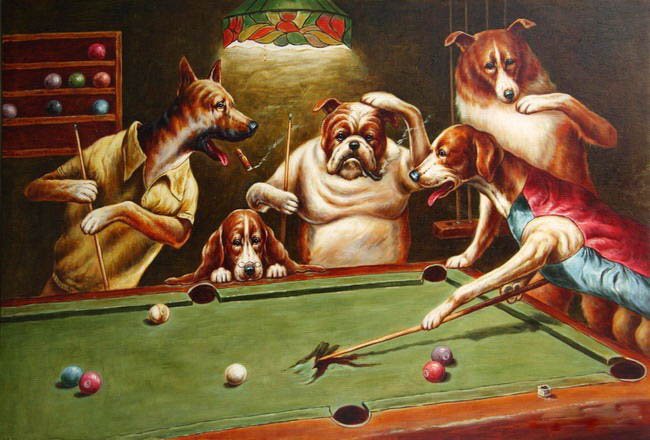


Classicism (from Latin classicus - exemplary) is an artistic style in art, the basis of which was the appeal, as an ideal aesthetic standard, to the images and forms of ancient art and the Renaissance, requiring strict adherence to a number of rules and canons.

Cosmism (from the Greek kosmos - organized world, kosma - decoration) is an artistic and philosophical worldview, which is based on knowledge of the Cosmos and the idea of a person as a citizen of the World, as well as a microcosm similar to the Macrocosm. Cosmism is associated with astronomical knowledge about the universe.
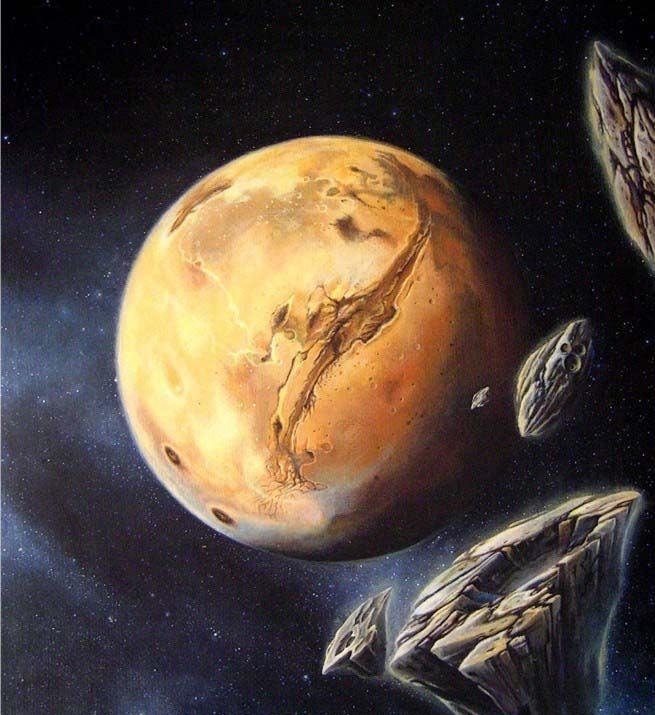
Cubism (from French cube - cube) is a modernist trend in art, depicting objects of reality decomposed into simple geometric shapes.
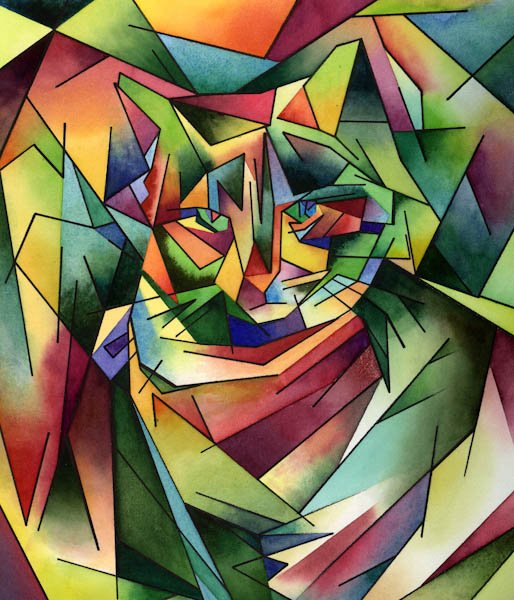
Lettrism (from the English letter - letter, message) is a direction in modernism based on the use of images similar to a font, unreadable text, as well as compositions based on letters and text.

Metarealism, metaphysical realism (from the Greek. meta - between and healis - material, real) is a direction in art, the main idea of which is to express the superconsciousness, the superphysical nature of things.

Minimalism (derived from the English minimal art - minimal art) is an artistic movement that comes from the minimal transformation of the materials used in the process of creativity, simplicity and uniformity of forms, monochrome, creative self-restraint of the artist. Minimalism is characterized by the rejection of subjectivity, representation, illusionism. Rejecting classical techniques and traditional art materials, minimalists use industrial and natural materials of simple geometric shapes and neutral colors (black, gray), small volumes, use serial, conveyor methods of industrial production.

Modern (derived from the French moderne - the latest, modern) is an artistic style in art, in which the features of the art of different epochs are rethought and stylized with the help of artistic techniques based on the principles of asymmetry, ornamentation and detail.
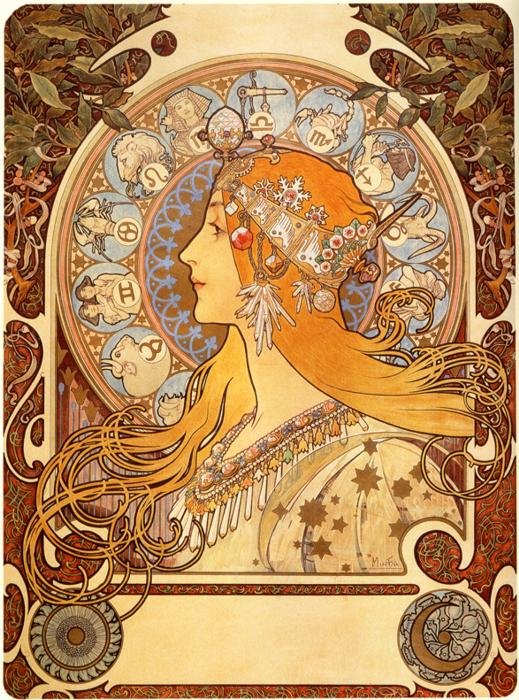
Neoplasticism is one of the earliest varieties of abstract art. Created by 1917 by the Dutch painter P. Mondrian and other artists who were part of the "Style" association. Neoplasticism is characterized, according to its creators, by the desire for "universal harmony", expressed in strictly balanced combinations of large rectangular figures, clearly separated by perpendicular black lines and painted in local colors of the main spectrum (with the addition of white and gray tones).

Primitivism, naive art, naive - a style of painting in which the picture is deliberately simplified, its forms are made primitive, like folk art, the creativity of a child or primitive man.
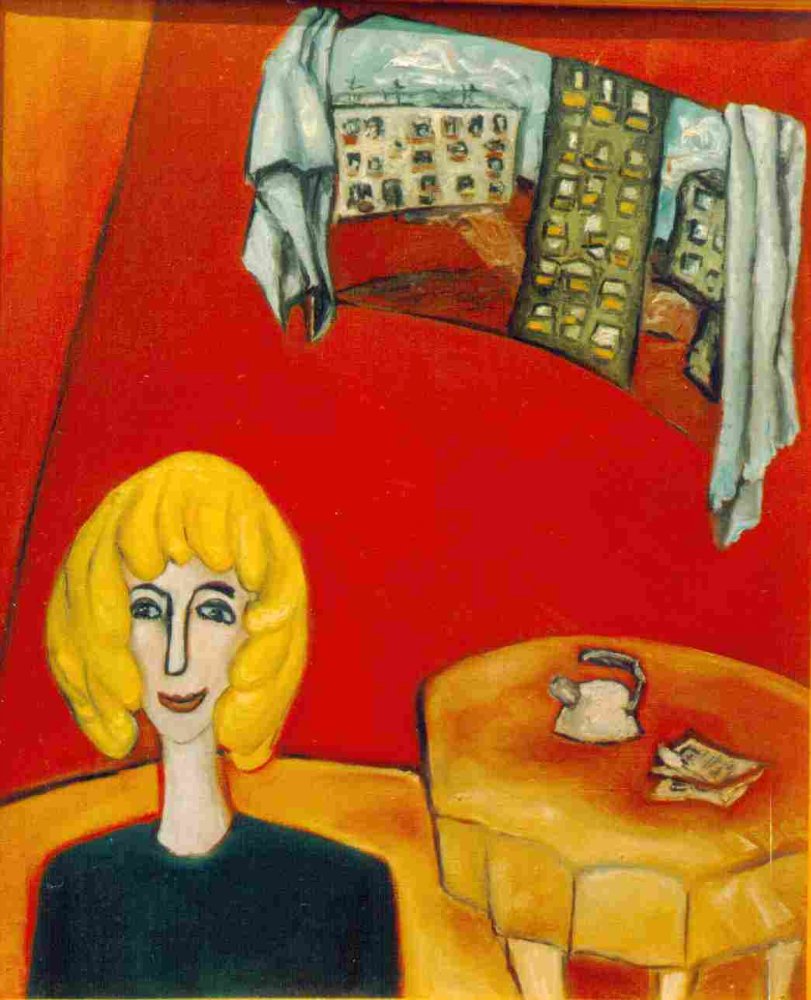
Op art (from the English optical art - optical art) is a neo-avant-garde trend in fine arts, in which the effects of spatial movement, merging and "hovering" forms are achieved by introducing sharp color and tonal contrasts, rhythmic repetitions, crossing spiral and lattice configurations, meandering lines.
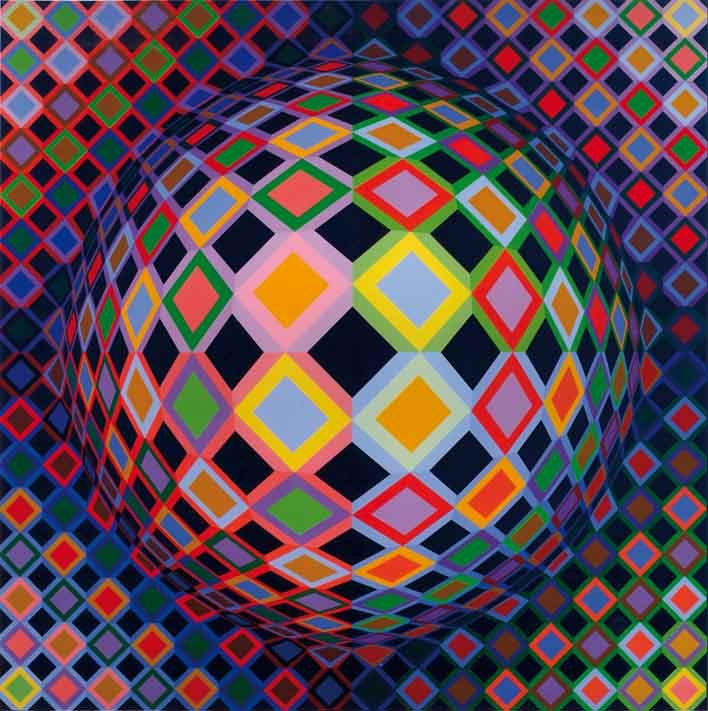
Orientalism (from Latin oriens - east) - a direction in European art that uses the themes, symbols and motifs of the East and Indochina
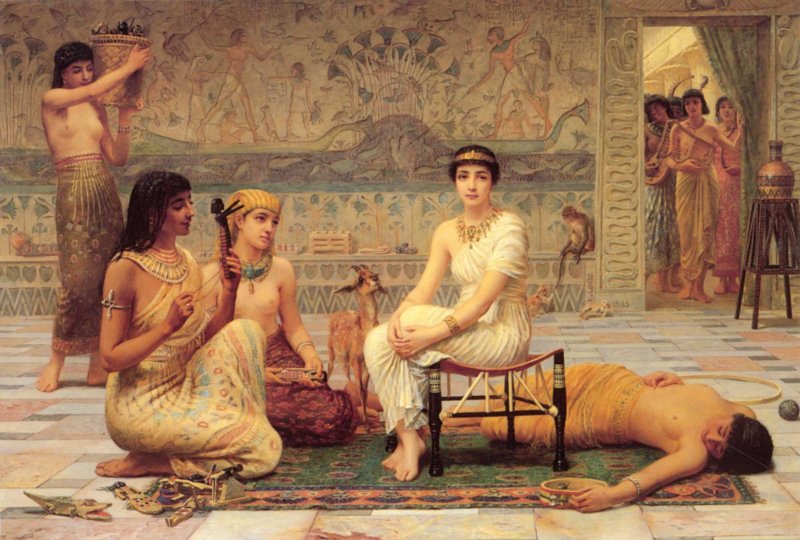
Orphism (from French orphisme, from Orp?ee - Orpheus) - a direction in French painting of the 1910s. The name was given in 1912 by the French poet Apollinaire to painting artist Robert Delaunay. Orphism is associated with cubism, futurism and expressionism. The main features of this style of painting are aestheticism, plasticity, rhythm, elegance of silhouettes and lines.
Masters of Orphism: Robert Delaunay, Sonia Turk-Delaunay, Frantisek Kupka, Francis Picabia, Vladimir Baranov-Rossine, Fernand Léger, Morgan Russell.
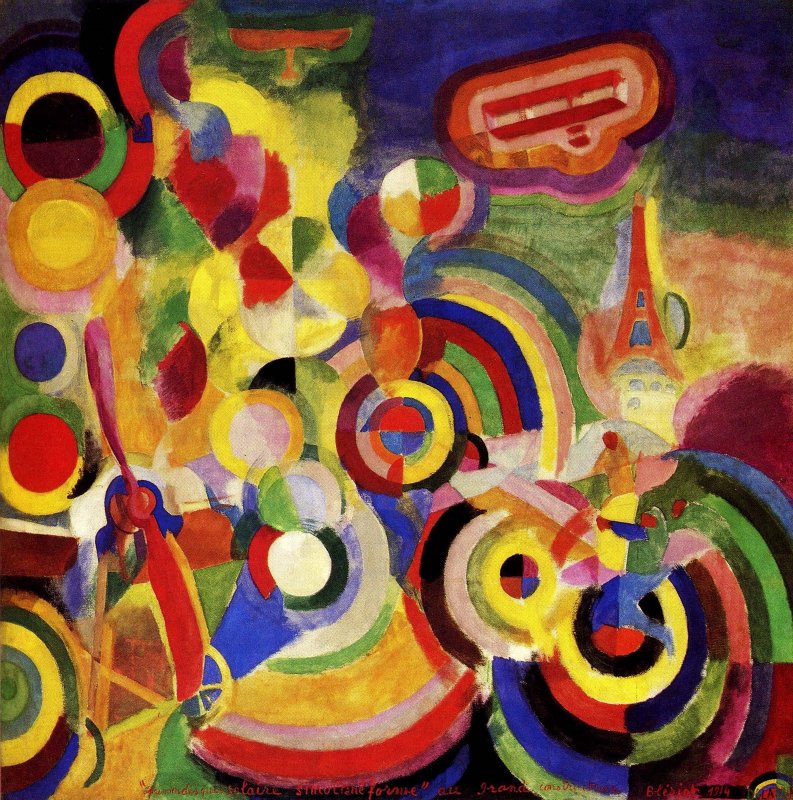
Pop art (from the English pop - a jerky sound, light cotton) is a neo-avant-garde direction in the visual arts, in which typical objects of modern urban life, samples of human environment artificial material environment

Postmodernism (from French postmodernisme - after modernism) is a new artistic style that differs from modernism in its return to the beauty of secondary reality, narrative, appeal to the plot, melody, and harmony of secondary forms. Postmodernism is characterized by the unification within the framework of one work of styles, figurative motifs and artistic techniques borrowed from different eras, regions and subcultures.

Realism (from lat. gealis - material, real) is a trend in art characterized by the depiction of social, psychological and other phenomena that is as close to reality as possible.

Rococo (derived from the French rococo, rocaille) is a style in art and architecture that originated in France in the early 18th century. He was distinguished by grace, lightness, intimate-flirtatious character. Having replaced the ponderous baroque, rococo was both the logical result of its development and its artistic antipode. With the Baroque style, Rococo is united by the desire for completeness of forms, but if Baroque gravitates towards monumental solemnity, then Rococo prefers elegance and lightness.


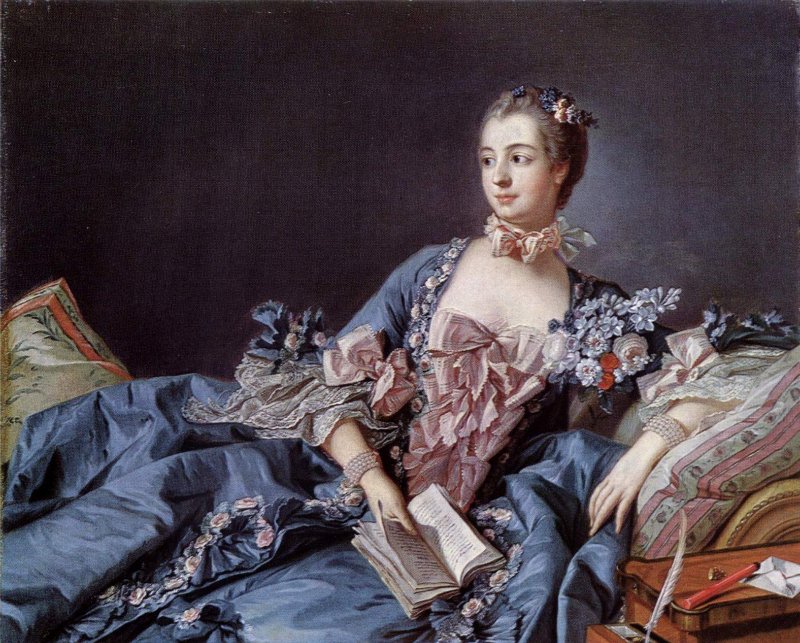
Symbolism (from French symbolisme - a sign, an identifying sign) is an artistic direction in art, based on the embodiment of the main ideas of the work through the many-valued and many-sided associative aesthetics of symbols.

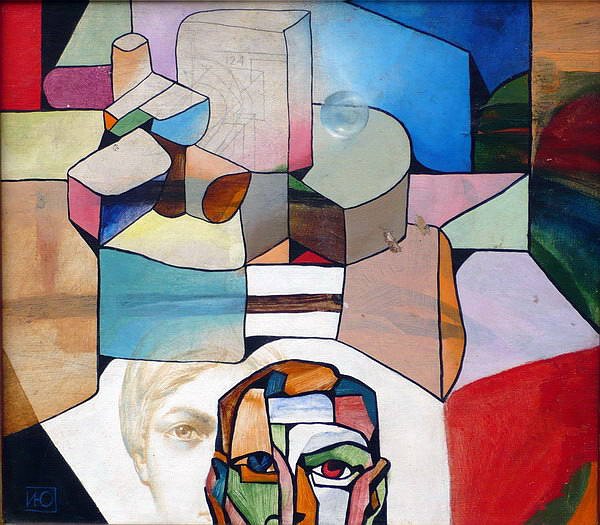
Socialist realism, socialist realism is an artistic direction in art, which is an aesthetic expression of a socialist conscious concept of the world and man, due to the era of socialist society.


Hyperrealism, superrealism, photorealism (from the English hyperrealism - over realism) is a direction in art based on an accurate photographic reproduction of reality.

Surrealism (from French surrealisme - over + realism) is one of the directions of modernism, the main idea of which is to express the subconscious (to combine dream and reality).


Transavant-garde (from Latin trans - through, through and French avantgarde - avant-garde) - one of modern trends postmodernism, which arose as a reaction to conceptualism and pop art. Transavant-garde covers the mixing and transformation of styles born in the avant-garde, such as cubism, fauvism, futurism, expressionism, etc.

Expressionism (derived from the French expression - expressiveness) - a modernist trend in art that examines the image outside world only as a means of expressing the subjective states of the author.



Style(Greek stilos - rod, stick for writing) - an established form of artistic self-determination of an era, region, nation, social or creative group or individual. The birth of the largest, so-called "historical artistic styles", is determined by the internal logic of the development of human artistic thinking, certain ways of seeing the world, understanding the properties of space and time in which a person lives and acts. Styles in art do not have clear boundaries, they pass one into another and are in continuous development.
Roman style(X-thirteenth century). The word "Romance" comes from the Latin romanus - Roman. Romanesque buildings symbolized not only political and cultural continuity from ancient rome, but also testified to the unlimited power of the new rulers of Europe, the omnipotence Christian God. The Romanesque style in architecture is characterized by the use of vaulted and arched structures, massive walls, narrow windows, towers of various silhouettes in buildings. The style is characterized by simplicity, expediency, rigor. Temples, monastic complexes, knight's castles were built in the Romanesque style.
Gothick style(XII-16th century). The word "Gothic" comes from the name of the Germanic tribe Goths. After the Romanesque style, Gothic became the second canon of the Middle Ages and the first pan-European artistic style in history. The basis of style is architecture. The technological need to lighten the vault gave rise to a new design.
High lancet arches, ribbed vaults and a frame system of supports made it possible to block gigantic spaces, increase the height of the building and free the walls from the load without fear that they would collapse. The walls were cut through by huge windows and stained-glass windows, creating a special play of color and light. The vertical becomes the main compositional dominant. All these techniques made it possible to create an artistic image that reflects the irrational, mystical aspiration of the human soul to heaven. The most famous Gothic cathedral is Notre Dame Cathedral in France.
Baroque (late 16th - mid 18th century). The Baroque era is associated with the rise of absolutism, as well as with the development of theater and opera. Originated in Italy, then spread to other countries European countries after the Renaissance. The very word "baroque" - of Portuguese origin and means "irregular pearl". Baroque art is characterized by grandiosity, splendor, passion for spectacular effects, the combination of fantastic and real, contrasts of scale and rhythm, materials and texture. The main means of expressiveness of Baroque art is the play of light and shadow. Baroque is characterized by pictorial illusoryness, i.e., the desire to deceive the eye, to get out of the space depicted into real space.
Classicism(XVII- early XIX in.). The word "classicism" comes from the Latin classicus - first-class, exemplary. AT Western Europe classicism dominated art in the 17th-18th centuries, in Russia - in the second half of the 18th-19th centuries. This artistic style is the highest manifestation of the ideas of compositional integrity, completeness, balance. Expresses the desire for simplicity, clarity, rationality, logic artistic image. This ideal manifested itself most clearly in the era of ancient classics.
Therefore, in most cases, the predominance of classical thinking means an orientation towards the forms of ancient art. As a method of thinking, classicism is normative and systematic. It is no coincidence that in classicism there is a system of rules and a complete theory of artistic creativity. Classicism puts forward such aesthetic norms as resistance to the cruelty of fate and the vicissitudes of life, the subordination of the personal to the common, passions to duty, reason, and the highest interests of society. In the literature of classicism there was a strict hierarchy of genres: "high" (tragedy, epic, ode, historical, mythological, religious paintings) and "low" (comedy, satire, fable, genre painting).
The late stage of classicism is the Empire style.
Rococo(first half of the 18th century). The word "rococo" comes from the French "rocaille", which means "asymmetrical", "decorated with ornate curls." Widespread in France under Louis XV. Rococo, associated with the crisis of absolutism, is characterized by a departure from life into the world of fantasy, theatrical play and pastoral plots, erotic situations. Rococo dominated interior decoration, sculpture, painting and arts and crafts.
Direction- social, artistic movement; the worldview of a rapidly changing time, revealed in art.
Romanticism(late 18th - early 19th century). Romanticism reflected disappointment in the ideas of the French Revolution and the worldview of the Enlightenment. The basis of the romantic worldview is a painful discord between the ideal and social reality. A sudden change in routine Everyday life as a result of industrialization, many people turned to the world of feelings and emotional experiences. Lyrics flourished in European literature during this period, poems and novels in verse became the main genre.
Romanticism is characterized by the opposition of two worlds: the real and the imaginary. Seeing the world of vices in contemporary reality, romanticism tries to find a way out for man. This exit is at the same time a departure from society in different options. Option one - romantic hero goes into his own inner world, the world of passions and experiences, the world of fiction and dreams. Option two - flight to exotic countries. Another direction of care may be care at a different time. Romanticism begins to idealize the past, especially the Middle Ages, seeing in it a different reality, a culture whose values are incomparable with the utilitarianism of modern society.
Realism(originated in the Renaissance, stood out as an independent direction in the XIX-XX centuries). A term in the broad sense of the word denoting the desire for a more complete, deep and comprehensive reflection of reality in all its manifestations. The trend towards realistic thinking is manifested in different forms in various types art, artistic directions and styles. The development of realism could most fully express the contradictions of social development.
The leading principles of realism: an objective reflection of life in combination with the author's ideal; reproduction of typical characters, conflicts, situations with their artistic individualization; the prevailing interest in the problem of "personality and society". Realism led to the flourishing of such a literary genre as the socio-historical novel. Literature, in turn, influenced realistic painting. Gustave Courbet(1819-1877) was the first who, in relation to his paintings, began to use the term "realism", which means the image of reality. Courbet depicted people at work, and not in joy and contentment, as was often shown before.
Naturalism (last third of the 19th century). The word "naturalism" comes from the Latin natura - nature. A direction in literature and art that strove for an objectively accurate and dispassionate reproduction of the observed reality. Theorist and leader of naturalism was Emile Zola. Representatives of naturalism proceeded from the position of the complete predetermination of the fate of man social environment, life, heredity, physiology.
historicism, or eclecticism(a trend in architecture, 1820-1920). A combination of heterogeneous stylistic elements or an arbitrary choice of stylistic design for buildings that have a qualitatively different meaning and purpose. During the construction of various structures, architects in most cases resorted to copying the styles of the past. These various building styles unites the common name "historicism". The use of historical styles in architecture showed pride in technical achievements XIX century.
Symbolism. In a broad sense, symbolism is an integral property of art, since artistic creativity is symbolic in nature. This is a trend of artistic thinking, which in different eras found its expression in religious art, in romanticism, in the modern period. Symbolism is an essential property of art, designed to establish a connection between the visible and the concrete with the realm of ideal representations.
As a trend in European and Russian art at the turn of the 19th-20th centuries, symbolism is imbued with mysticism, mystery, the desire to comprehend the highest values with the help of symbols, allegories, and generalizations. To express the inexpressible is the task of symbolism. Symbolism is a two world: the world of everyday reality and the transcendent world, that is, the world that is beyond sensory perception. Symbolists believed that art has a special, magical power that can renew life, worldview and life of people.
Impressionism(the last third of the 19th - early 20th centuries). The word "impressionism" comes from the French impression - impression. The name arose after the exhibition in 1874, which exhibited the painting by Claude Monet “Impression. Rising Sun". The Impressionists were the innovators who had the greatest influence on the development of art in the 20th century. the impressionists passed artistic means impressions exactly as brief moments were captured by a camera.
They conveyed the external impression of light, shadow, reflexes on the surface of objects with separate strokes of pure colors, which visually dissolved the form in the environment. The painting method was based on the principle of contrast perception of complementary colors. The plot of the paintings was of secondary importance for the artists. They tried to capture the movement in the picture and at the same time portray, capture the fleeting nuances of this movement. Of particular interest to artists were the unsteady, transitional states of natural phenomena (water, clouds, light).
Post-impressionism ( late XIX- the beginning of the 20th century). Post - after + impressionism. The general designation of various artistic movements in painting of the 20th century that arose as a reaction to the method of impressionism: symbolism, divisionism, expressionism, fauvism, orphism, cubism. The Post-Impressionists are Georges Seurat,Paul Cezanne,Paul Gauguin,Vincent Van Gogh,Henri Toulouse-Lautrec, as well as representatives of neo-impressionism and the Nabis group. Each artist went his own way, forming his own creative method and individual artistic style.
Pointillism, or divisionism, or neo-impressionism (late 19th century). From the French point - point, from lat. division - division. The pictorial method and the trend in post-impressionism painting that arose on its basis, in which work on the picture is carried out with small separate strokes of a dotted or rectangular shape of pure color. Strokes of paint of different colors had to be mixed optically when the viewer perceived the picture from a certain distance, and not mechanically on the artist's palette, as was always the case.
Modern(late 19th - early 20th century). The Russian name of the style, respectively, in French "l" art nouveau "is a new art. Modern is a set of attempts to form a holistic, opposing eclectic art style in architecture and decorative art. Representatives of modern used new technically constructive means (metal, glass, ceramics) , free planning, a kind of architectural decor for creating unusual, emphasized individual buildings (mainly city mansions), all the elements of which were subject to a single ornamental rhythm and a peculiar symbolic design. Fine and decorative art of modernity is distinguished by the poetics of symbolism, the decorative rhythm of flexible, flowing lines, stylized floral pattern.
Decadence, or decadence (second half of the 19th - early 20th centuries). From the French word decadence - decay, decline. The general name of the crisis phenomena of European culture, which are characterized by moods of hopelessness, rejection of life, individualism. Constant themes of decadence are the motives of non-existence and death, longing for spiritual values, rejection of civil ideals, faith in reason, which is associated with the increasing role of the intellect. Decadence got wide use in Russia, especially after the revolution of 1905-1907, in the work of a number of masters of the World of Art and Blue Rose associations.
Vanguard (XX century). A term denoting a set of colorful and diverse innovative, revolutionary, rebellious movements and trends in the artistic culture of the 20th century. Avant-garde phenomena are characteristic of all transitional stages in history artistic culture, certain types art. However, in the XX century. avant-garde acquired global value a powerful phenomenon of artistic culture, which is associated with a turning point in the cultural and civilizational processes caused by the scientific and technological progress of the 20th century. The main trend of the avant-garde is the rejection of traditions and the experimental search for new forms.
Being the extreme expression of a broader direction of modernism, the avant-garde is looking for various ways to directly influence readers, listeners, viewers. To produce shock, scandal, shocking - without this, avant-garde art is impossible. The main thing is the effectiveness of art - it is designed to amaze, stir up, cause an active reaction in a person from the outside. At the same time, it is desirable that the reaction be immediate, instantaneous, excluding a long and concentrated perception of aesthetic form and content. Misunderstanding, complete or partial, organically enters into the avant-gardist's plan. The most essential thing in the avant-garde is its unusualness, catchiness.
The principles of the avant-garde were adopted by cubism, futurism, dadaism, abstract art, surrealism, expressionism, constructivism and other movements. The Russian avant-garde in the visual arts includes M. Chagall,K. Malevich,V. Kandinsky. It was the avant-garde that by loosening and destroying traditional aesthetic norms and principles, forms and methods of artistic expression and opening up the possibility of unlimited innovations, often based on the latest achievements of science and technology, opened the way for the transition of artistic culture to a new quality. With this, the avant-garde fulfilled its function in the new European culture and basically ended its existence as a kind of global phenomenon in the 1960s and 70s.
Modernism (late 19th - mid-20th centuries). The general designation of the phenomena of art and literature, asserting new approach to the picture of life. Modernism combines many relatively independent ideological and artistic trends and trends, different in social scale and cultural and historical significance (fauvism, expressionism, symbolism, cubism, abstractionism, constructivism). The formation of modernism as a legitimate artistic and aesthetic system was prepared by its stages such as decadence and avant-garde. The predominance of gloomy coloring, pessimistic moods and anxious languishing forebodings, the consciousness of the unknowability and immutability of the inhuman world - such an emotional mood of the works of modernism.
Postmodernism(second half of the 20th century). By the middle of the XX century. postmodernism was understood as the modern phase of the development of European culture. Leading Western political scientists interpret postmodernism as a symbol of a post-industrial society. Postmodernism is a broad cultural trend in which philosophy, aesthetics, art, and the humanities fall into orbit.






